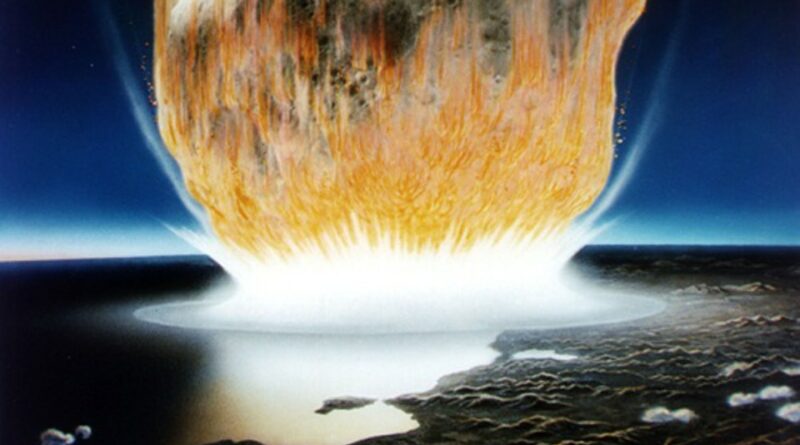Earth’s Mass Extinction
[Please note that this page contains affiliate links. If you choose to purchase after clicking a link, I may receive a commission at no extra cost to you.]
Earth’s Mass Extinction – it is estimated that over 99 percent of all species that have ever lived on this planet have gone extinct.
That accounts for around five billion species that have been completely wiped off the earth.
Today’s number is between 10 and 14 million, and only 1.2 million have been documented.
That leaves over 86 percent that has yet to be labelled.
Mass extinctions are a rarity.
However, solo extinctions are a relatively common event.
Earth’s Mass Extinctions
Recently, scientists have started to record extinctions and have been shocked to learn about the extremely high death rates.
Most of these species were never adequately documented previously.
Scientists now predict that by 2100 close to half of all animal and plant species will go extinct.
Typically, it takes about 10 million years when a species arrives until it becomes extinct, except for living fossils.
For millions and millions of years, they survive almost no morphological change.
We can see these living fossils in the forms of alligators and crocodiles today.
They have been here since the time dinosaurs roamed the planet.
Hopefully, this is good news for humans, as we have only been here for around 180,000 years.
A species will be wiped out when a higher-up species depletes them or when living conditions can no longer support their life.
Or, in the rare instance, a disease will kill them off.
Here are some diseases that have diminished species or have been close to wiping them out.
The bubonic plague was the worst epidemic ever to devastate human life.
First, it killed off about 25 million lives as it spread through fleas on mice.
Now a similar disease has arrived called sylvatic plague.
It has attacked various prairie dog populations in towns on the Fort Belknap Reservation and has infected over 3,000 acres.
It has reaped havoc over prairie dogs, but it also significantly affects predators who hunt them.
Take the black-footed ferret, for example, and gophers are their number one food source.

Endangered Species
So if their food source disappears, will they. And to add insult to injury, the black-footed ferret is already one of the most endangered species on earth.
Thankfully, scientists now have a vaccine for it.
Peanut butter is one of the prairie dog’s favourite foods, and it helps fight against the plague.
So scientists mix peanut butter with vaccines and distribute it all over their habitat.
They have also been injecting vaccines into the ferrets and using insecticides to kill fleas.
Hopefully, this can replenish their population and not affect any more animal species.
Psittacine Beak and Feather Disease (PDFD) victims are lovebirds, cockatoos, parrots and macaws.
However, the PDF virus also attacks even more seriously endangered species of tropical birds.
For instance, the New Caledonian Rainbow lorikeets can quickly spread the disease to other nearby species.
This virus is almost 100 percent fatal when picked up by young birds.
PDF likes to hide in feathers and is easily transferred to others.
It spreads through direct contact, feather dust, inhalation, and contaminated surfaces, leading to death.
Symptoms show disfiguring, irreversible feather damage, lesions, twisted beaks and devastating weight loss. Unfortunately, scientists have yet to find a cure.
This disease is spread through animals that are alive and dead carcasses.
It most likely will be carried and distributed by foxes.
Sarcoptic Mange can also be found in wolves, lynx wombats, and other species.
It has already wiped out red foxes on the island of Bornholm in Denmark.
It is spread through mites that burrow in their victims’ skin and can lay through the animals’ skin to others.
It causes massive hair loss and terrible itching, leading to organ damage, weight loss, and death.
Unfortunately, there has yet to be a cure for this awful disease.
Chronic Wasting Disease (CWD)
Chronic wasting disease (CWD) is life-threatening to elk and deer populations.
In 1957, in Florida, the key deer species was down to just 27 due to CWD.
Now their population has risen to approximately 800.
Thanks to CWD, car collisions, and human interactions, the Virginia white-tailed deer have now been endangered.
It will not be long before they are completely gone.
CWD is similar to mad cow disease, as it attacks the brain, and it does not take long to become fatal.
Symptoms show a weakened body and weird changes in the animal’s behaviour.
It leads to drinking a substantial amount of water and extreme salivation as they walk with their ears and head down.
Death inevitably follows shortly after.
Europeans arrived in Australia back in 1788 to colonize the continent.
At the same time, they brought rabbits with them.
By the 1920s, the population of wild rabbits skyrocketed to over 10 billion.
These rabbits destroyed Australia’s natural ecosystem by gobbling massive amounts of food, which forced other animals away.
Rabbit hemorrhagic disease virus (RHDV) has wiped out over 60 percent of the rabbit population.
That disease was far more successful than previous poisoning attempts.
Thanks to RHDV, it has allowed rodents to increase their numbers, which otherwise were almost extinct.
Vegetation has started to grow again, and kangaroo numbers and other species have begun to bounce back.
It has proven to benefit other species of such a brutal disease.

Parasites and Other Mass Extinction Causes
We think of parasites like those carrying deadly diseases, although not all are these death carriers.
Scientists believe that some help builds a more robust immune system in some animals.
Some parasites will help them become resistant to them later in life when exposed to young animals.
And those animals that are not exposed young can become vulnerable when they mature.
A type of flightless bird out of New Zealand called a Kakapos has less than 200.
It was being killed off by a tapeworm, which is now extinct, allowing this bird to come back from almost being ultimately killed off.
Some parasites affected the spotted kiwis, both of which are now extinct.
Parasites sometimes have to go extinct to save other species, and other times they help protect them.
Chytridiomycosis, or “chytrid,” is a deadly fungus that has preyed upon salamander and frog species.
In just the last three decades, it has put over 200 amphibian species into a cataclysmic decline and has made some face extinction.
Chytrid Killed Off 30 Species
Since the early 2000s, chytrid has driven 30 species to end, and five of them had never been previously seen.
The fungus can be found on all continents, except for Antarctica.
It damages the outer layer of salamanders’ and frogs’ skin.
These amphibians use their skin to absorb water and nutrients, but this fungus will suffocate them.
So scientists continue to research a cure.
Seastar wasting syndrome first appeared in the 1970s.
The last plague began in 2013, and it startled scientists with how fast it spread.
It quickly made its way up to Alaska, starting on Mexico’s Pacific coast.
The disease affected 19 species of sea stars and has caused three species to go extinct.
By 2014, 87 percent of places surveyed had become infected.
It was the most significant disease outbreak in recorded maritime history.
Wasting disease spreads through physical contact while attacking the immune system.
Sea stars then suffer an infection that leads to abrasions, which leads to arms falling off.
Finally, they turn to mush. It only takes two days for death to occur after the lesions.
Scientists remain baffled as to why this sudden outbreak occurred.
Acidification and warmer water temperatures are possible causes.
Wasting disease is now affecting sea urchins as well.
As of now, there is no cure for it.
Scientists Searching Solutions
Scientists are scrambling to help find a solution before it spreads to even more sea creatures.
It was first discovered in 1976 in Africa’s Democratic Republic of Congo.
Scientists believe it may have started in bats and then carried over to other animals.
It is easily spread from human to human through bodily fluids.
We have recently seen epidemics of Ebola take place, especially in Africa, wiping out many people.
Early symptoms are a fever and a sore throat, leading to more severe symptoms, such as organ failure of the liver and kidneys, internal and external bleeding, and death.
It has devastated human populations, but it has also hit other species close to our kind.
Many primates call Africa home, especially the significant gorillas and the chimpanzee’s closest relatives.
In just 40 short years, Ebola has overpowered close to a third of the planet’s species, putting gorillas on the endangered list.
Thanks to frequent epidemics, entire populations have vanished.
Mass extinction definition – according to the dictionary, mass extinction meaning is “the extinction of a large number of species within a relatively short period of geological time, thought to be due to factors such as a catastrophic global event or widespread environmental change that occurs too rapidly for most species to adapt.”

